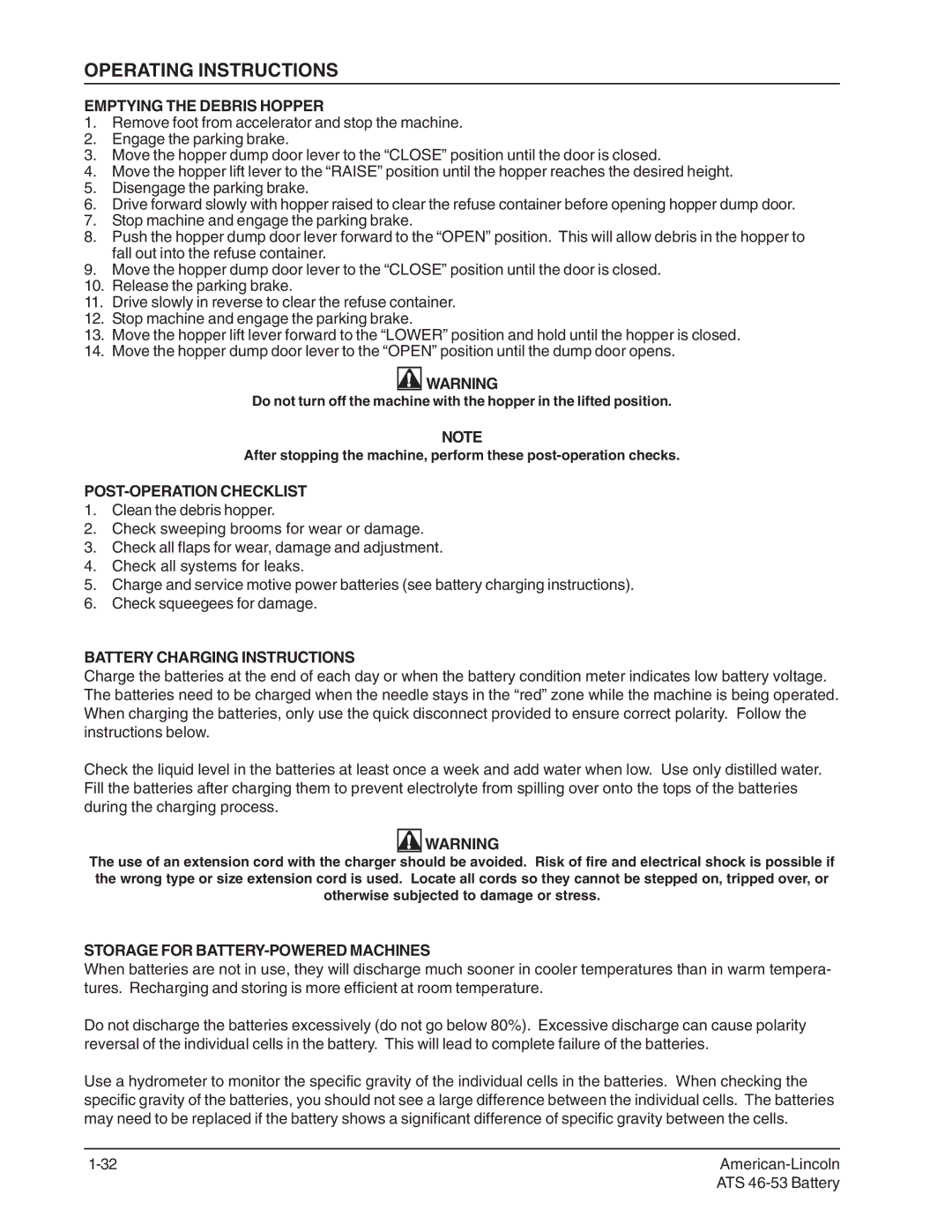46/53 specifications
The Nilfisk-ALTO 46/53 is a powerful and versatile range of professional vacuum cleaners designed to meet the demanding needs of various cleaning applications. Known for their efficiency and reliability, these models are ideal for both commercial and industrial environments. With a robust construction, the Nilfisk-ALTO 46/53 series is built to withstand the wear and tear of daily use.One of the standout features of the Nilfisk-ALTO 46/53 is its impressive suction power. Equipped with high-efficiency motors, these vacuum cleaners ensure optimal performance while consuming less energy. This not only enhances productivity but also contributes to cost savings and environmental sustainability.
The design of the Nilfisk-ALTO 46/53 is user-friendly, featuring an ergonomic handle and lightweight construction that make it easy to maneuver in tight spaces. Its compact design does not compromise on the capacity, as the model comes with a generous tank size, allowing for extended cleaning sessions without frequent interruptions for disposal.
Another notable characteristic of the Nilfisk-ALTO 46/53 is its advanced filtration system. The vacuum includes a HEPA filter, which captures fine dust and allergens, ensuring a cleaner and healthier environment. This feature is particularly beneficial in settings where air quality is critical, such as hospitals and laboratories.
In terms of versatility, the Nilfisk-ALTO 46/53 is equipped with various accessories and attachments designed to tackle different surfaces and cleaning tasks. From upholstery to hard floors, the adjustable settings and specialized tools ensure that users can achieve optimal results no matter the job at hand.
The Nilfisk-ALTO 46/53 also boasts noise reduction technology, making it suitable for use in noise-sensitive environments. Its low operational noise allows cleaning to occur without disturbing customers or staff, which is a major advantage for businesses operating during hours of high foot traffic.
In summary, the Nilfisk-ALTO 46/53 range combines powerful suction, advanced filtration, and user-friendly features into a single cleaning solution. Whether for commercial, industrial, or professional use, this vacuum cleaner stands out as a reliable option that meets a wide variety of cleaning needs while promoting efficiency and health.

